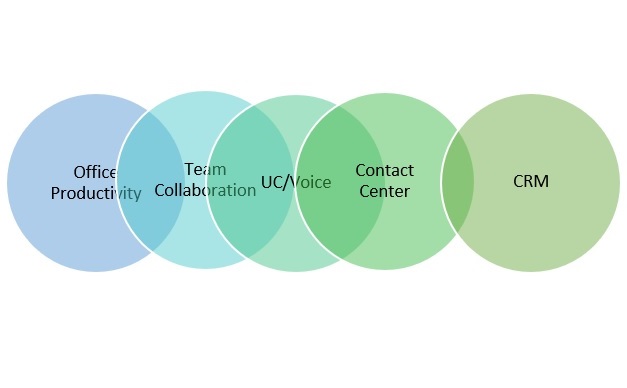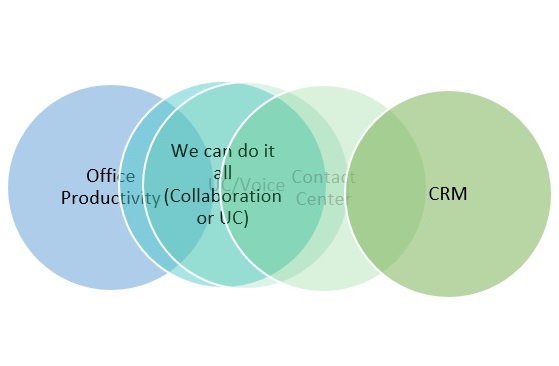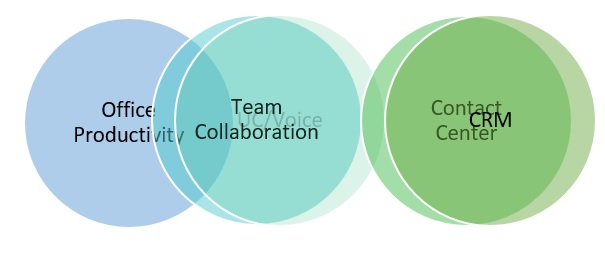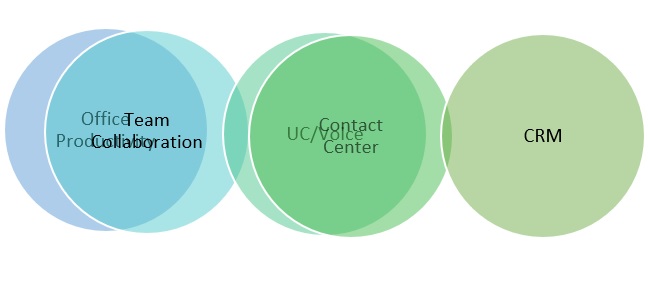As team collaboration gains increasing popularity and adoption, the landscape for voice communications has become more, rather than less, complex. While on a decline, traditional phone calls aren’t going away but rather are feeling pressure from other forms of communication, which tend to be voice-enabled anyways. Platforms centered around how people work together are great, but a large percent of communication occurs outside an organization, for which collaboration platforms can create additional challenges. Decisions around where voice channels should live have become more complicated. With the additional consideration of contact center functionality, the question becomes infinitely more compounded.
Contributing to the noise is the fact that solutions that were previously siloed are now pushing limits into other areas. For example, team collaboration has traditionally included things like workflow, desktop sharing, active directory integration, and presence information. Now, team collaboration applications increasingly are pushing boundaries by offering services like directories and calendars, touting persistent meeting rooms as an alternative to email; while at the same time, pushing into traditional telephony/communications services such as voice communications.
What used to be considered telephony is now unified communications (UC), which encompasses voice and video conferencing, softphone/mobile clients, voicemail-to-email transcription, call routing/auto-attendant features, IM/chat, active directory integration, and calendar. UC solutions can also include contact center functions, with most offering multi-channel or omnichannel options, IVR, supervision, analytics, and workforce management features. And cloud-based conference platforms are adding direct-dial telephony and chat options.
Traditional contact center solutions, which focus on ACD; IVR; workforce management, optimization, and supervision; quality monitoring; call and desktop recording; and analytics, represent another function specific form of communications technology. Many of these platforms offer UC options, so organizations with sophisticated contact center requirements could select a contact center solution to cover telephony requirements without implementing a separate UC platform. On the far end of the contact center spectrum, customer relationship management solutions, such as Salesforce, can also incorporate voice communications into a CRM platform.
Below we look at some questions to ask yourself and how to think about where voice fits into your communications strategy.
Overlapping Functions
Given the overlap of services between platforms, what criteria should be considered when determining where to process voice communications? For example, if sophisticated collaboration and contact center elements are in play, should contact center requirements drive the voice decision? Would contact center voice stay with the contact center platform, and non-contact center voice go with the team collaboration platform? If a CRM platform is already in use, should voice be added to the contact center platform or deployed with a standalone contact center solution with integrations into the CRM platform? What criteria should be considered when making the decision? Is there an easy way to compare the options before deciding?
A Vendor’s Perspective
If each one of these platforms can “do it all,” how can organizations sort through the noise and decide on a solution, or combination of solutions, that bests meet their requirements? It’s unlikely that any solution will serve all functions equally well. With that in mind, ask yourself which environments require a best of breed approach, and in which can functions be consolidated? Should some functions be consolidated? For example, can contact center voice be sufficiently supported by the CRM, or is it better to have a standalone contact center with some functions integrated to separate CRM? Can UC voice be adequately handled within the collaboration platform, or should it be combined with the contact center? Or, can a UC solution support contact center and voice, with integrations to team collaboration and CRM?
While there is no one-size-fits-all approach that answers these questions, understanding your organization’s priorities and culture will facilitate the decision-making process. Decision drivers might include whether you have already committed to a collaboration platform such as Gsuite or Teams. Do you have favorable vendor relationships? Do you have sophisticated contact center requirements? Are there a large number of analog devices that must continue to be supported, and what skills do your internal resources pose.
"SCTC Perspective" is written by members of the Society of Communications Technology Consultants, an international organization of independent information and communications technology professionals serving clients in all business sectors and government worldwide.















